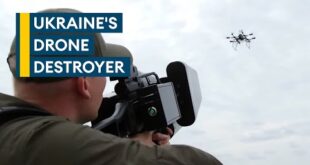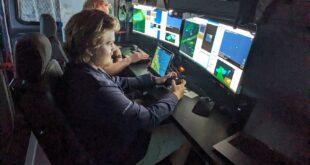2. Better detect small obstructions
Pointing a camera straight down negatively impacts detecting small obstructions, like vent pipes and attic fans, because the verticality of those objects aren’t effectively modelled. Missing obstructions in your modelling can derail a solar project by forcing a redesign, delaying an install, or negatively impacting customer expectations.
Oblique imagery will better present the X, Y, and Z-axes of a property, meaning you’ll more easily spot obstructions and can plan around them. This might mean a smaller installation, yet you can adjust customer expectations ahead of time to avoid problems on install day.
3. Increase sales using oblique images
Models created from nadir images lack real-world features. Often facades can look melted and the sides of structures blurred. Or worse, a nadir image misses data and yields holes in a model reconstruction. Oblique imagery, on the other hand, can yield truly comprehensive, interactive 3D models. Not only does this help solar designers get more context about the site, the images can be used for marketing and showing customers what the finished project will look like. These to-scale, virtual replica models are sometimes so good that they look like photos of real homes.
Don’t lose on bad data
Installing a solar project is like putting a mini-power plant on your roof. It’s best practice to capture the most thorough details possible. Thankfully, multiple drones (like DJI’s Mavic Pro or Phantom Series, Autel’s flagship drone, and Skydio) now make it much easier to automatically capture oblique imagery. This enables accuracy to within 2-3 inches and clarity to streamline and automate much of a solar project’s workflow.
Read more from Jason at Scanifly in this piece on flying a drone in challenging conditions, and combining the best technologies for the best in 3D modeling.

Jason Steinberg
Jason Steinberg is the CEO of Scanifly and oversees the operational and financial aspects of the company. Scanifly is the only drone-based solar software committed to improving the efficiency, accuracy and safety of solar projects globally. Previously, Jason helped finance over $3 billion of renewable energy projects and companies as a banker for CohnReznick Capital. Prior to that, Jason worked for Bloomberg New Energy Finance as a lead North American data researcher. Jason’s first job in the industry was installing solar arrays on rooftops in New Jersey. Jason is a FAA Part 107, CFA Charterholder and a NABCEP PV Associate.
https://dronelife.com/2021/10/25/residential-solar-surveys-with-drones-why-you-should-always-include-oblique-imagery/
 Unmanned Aerial Vehicle The latest drone news
Unmanned Aerial Vehicle The latest drone news


